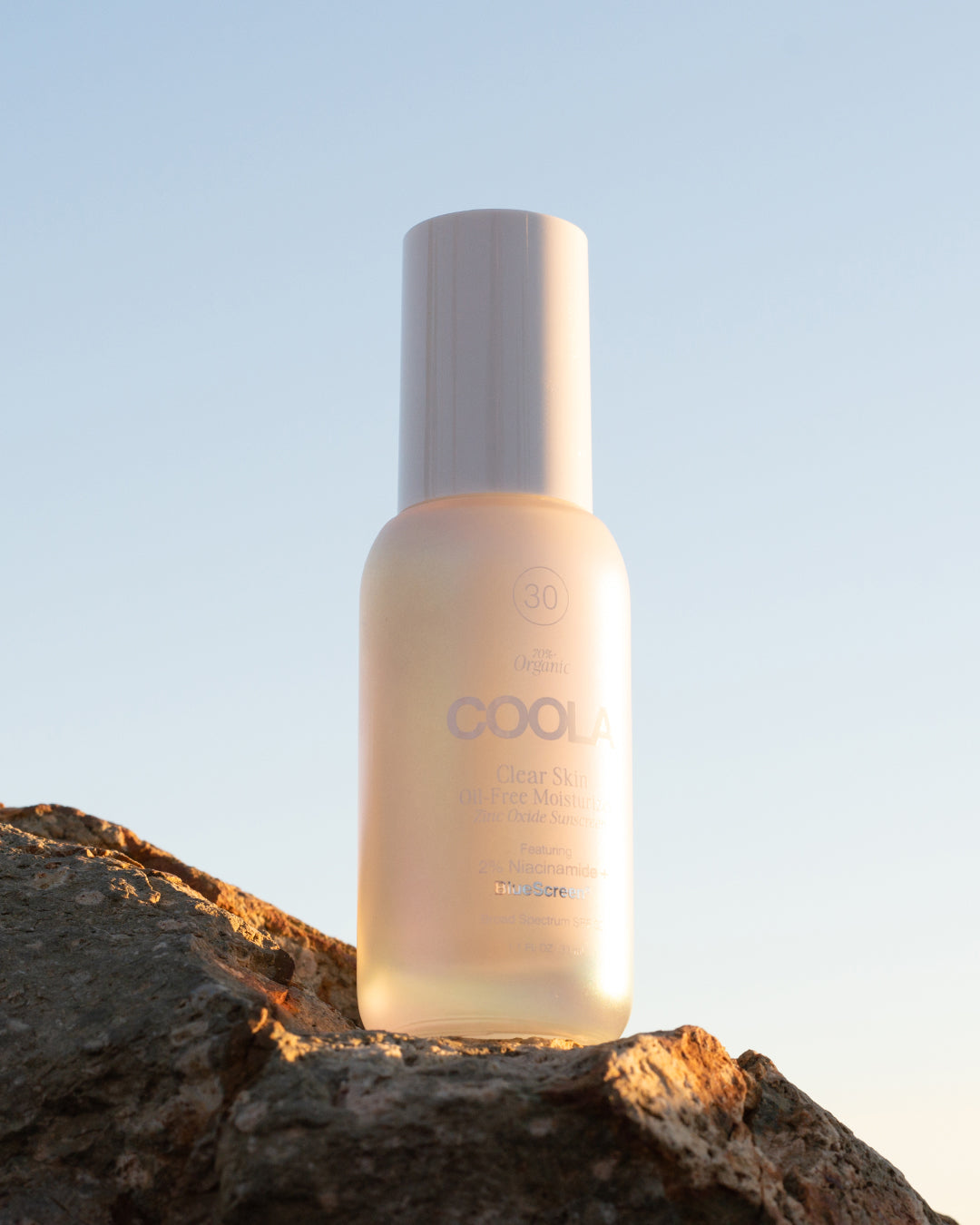
Non-Greasy Sunscreens for Oily Skin: The Best Formulas for a Fresh, Shine-Free Look
No matter what type of skin you have, it’s critical to use sunscreen to protect against the sun’s ultraviolet (UV) rays. Not doing so increases the risk of sun damage and skin cancer. But that doesn’t mean the products you use have to be greasy or make your skin feel uncomfortable. With the right SPF sunscreen, you can protect your skin and feel confident. Choose a sunscreen designed for oily skin that provides effective protection without the heavy, greasy feel of traditional formulas.
Understanding Sunscreen: Chemical vs. Mineral
To increase the potential protection from skin cancer and premature aging, choose a sunscreen with an SPF of 45 or higher. However, you should read further into the product's label to learn more about its sunscreen ingredients.
Sunscreen products have active ingredients that prevent the sun’s UV radiation from reaching the surface of the skin.
Chemical sunscreen products are a common option. These products include ingredients like avobenzone and octisalate. These chemicals absorb UV rays much like a sponge, minimizing the risk of them getting to the skin to cause damage.
Others are mineral-based, which are sometimes referred to as physical sunscreen ingredients. These products include titanium dioxide and zinc oxide that reflect and scatter UV rays. They work more like a shield than a sponge to protect your skin.
Key Features of Non-Greasy Sunscreens for Oily Skin
When choosing a non-greasy sunscreen for your face and other areas, look for products designed specifically for oily skin. Some of the most important features to expect include:
- Non-Comedogenic. Look for lightweight, non-comedogenic sunscreens that won’t clog pores or trigger irritation. Mineral sunscreens are often a great option for oily or sensitive skin, as they tend to be gentler and can offer a natural, mattifying finish. While they form a protective barrier on the skin’s surface, well-formulated options absorb easily without feeling heavy or leaving a greasy residue.
- Broad-spectrum SPF formulation. A broad-spectrum sunscreen is ideal because it provides the highest level of UV protection possible, blocking both ultraviolet A (UVA) and ultraviolet B (UVB) rays.
- The role of mattifying agents. Choose a product that contains mattifying ingredients that help manage oil and create a fresh, clean look. A matte finish sunscreen gives you a comfortable feel while helping prevent greasy skin.
Top Non-Greasy Sunscreen Formulas for Oily Skin
As you consider non-greasy sunscreen options, focus on the following products. They're designed to provide a better level of protection without the oily feel.
Clear Skin
Clear Skin Oil-Free Moisturizer is an SPF 30 product that offers a silky, sheer application. It is an oil-free product ideal for acne-prone skin.
Fragrance-Free Face Lotion
Fragrance-Free Face Lotion is an excellent choice if you want an organic SPF 50 product. Its antioxidant-rich formula helps encourage healthy skin, while its blend of non-mineral sunscreen components provides broad-spectrum protection.
Sun Silk Drops
Applying Sun Silk Drops to your skin 15 minutes before heading out provides protection for your skin and offers a layer of protection from premature aging. Its lightweight feel makes it comfortable to wear all day.
Rosilliance
Rosilliance Tinted Moisturizer provides SPF 30 protection and acts as a tinted moisturizer. It has rose stem cell actives to help with hydration and safflower seed oil that optimizes its effectiveness.
How to Apply Sunscreen Effectively
Once you purchase the best sunscreen for oily skin, follow the product's specific application directions. Start with establishing a good skincare routine for oily skin to clean away dirt and debris that could clog pores. Then, consider these tips:
- Apply sunscreen at least 15 minutes before spending time outside in the sun.
- Cover all exposed areas of your skin with the manufacturer’s recommended amount of sunscreen.
- Rub the product into the skin gently to encourage it to penetrate.
- Don’t forget areas like the eyelids and the backs of your ears.
- Reapply as often as directed or anytime the product washes off.
Frequently Asked Questions
Can sunscreen worsen oily skin?
Using the wrong type of sunscreen can damage your skin. For instance, a non-comedogenic product could clog pores if you have oily skin.
What are chemical sunscreen benefits?
Chemical sunscreens are lightweight and tend to be easy to apply. Some are broad-spectrum products that are well-suited for daily use.
How often should I apply sunscreen?
Apply an SPF product at least once per day. However, in situations where you are sweating, swimming, or engaging in a lot of activity, the manufacturer could recommend reapplication more frequently.
Are lightweight sunscreen options good for my skin?
When choosing sunscreen, consider your skin type. Lightweight sunscreen is best for oily skin, while a moisturizing product may benefit drier skin.
Sources:
- American Academy of Dermatology Association. "How to Decode Sunscreen Labels." AAD, 25, Apr. 2024, https://www.aad.org/public/everyday-care/sun-protection/shade-clothing-sunscreen/understand-sunscreen-labels
- U.S. Food and Drug Administration. "Sunscreen: How to Protect Your Skin From the Sun." FDA, 11, Aug. 2024, https://www.fda.gov/drugs/understanding-over-counter-medicines/sunscreen-how-help-protect-your-skin-sun
- Levy, Stanley B. "Sunscreen and Photoprotection." Medscape, 20, June 2023, https://emedicine.medscape.com/article/1119992-overview




